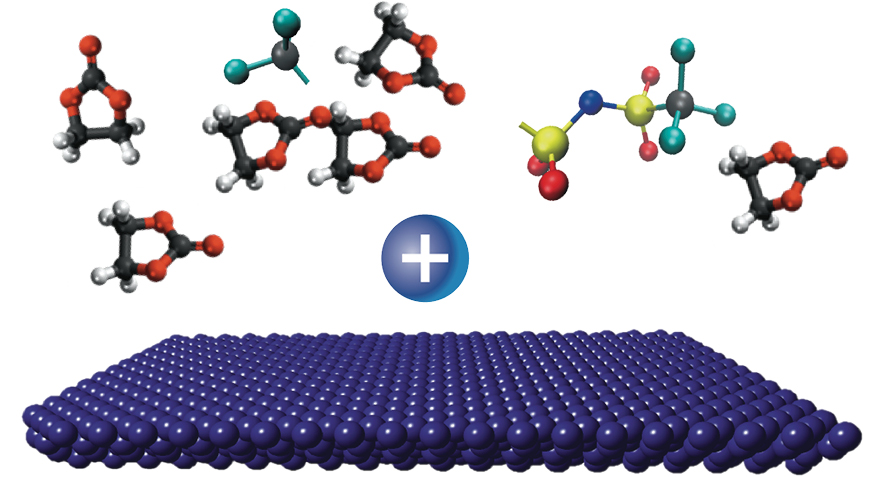
All batteries today use a liquid electrolyte that carries the working ion–Li+ in the case of lithium-ion batteries–between the two electrodes where it stores or releases energy. In solution, the working ion is surrounded by a solvation shell consisting of a specific configuration of molecules and counter ions that make up the electrolyte. This solvation environment controls nearly everything that happens in the battery–destructive chemical reactions of the working ion in the electrolyte, the mobility of the working ion as it moves between electrodes through the electrolyte, and the reactions of the working ion at the electrode interfaces that store and release energy.
Understanding and predicting all the ion-molecular interactions among the working ion and the molecules of the electrolyte would allow “bottom up” design of new electrolytes, atom-by-atom and molecule-by-molecule, that achieve all the performance metrics for a given battery application, including charging speed, battery lifetime, cost and safety.
The Liquid Solvation Thrust will examine two focus areas: equilibrium structure of solvation shells at rest and the dynamic response of liquid solvation to perturbations such as electrified interfaces and the state of charge in the battery. It will rely heavily on simulations of organic molecules introduced and developed in the Electrolyte Genome of JCESR’s first five years, and on in situ characterization of solvation and de-solvation phenomena at interfaces.


